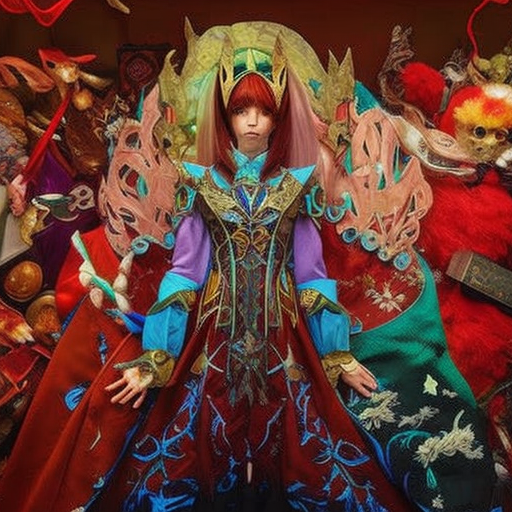Cosplay: A Fusion of Costume and Play
Cosplay, a portmanteau of “costume” and “play,” is a popular subculture that involves dressing up as characters from various forms of media, such as anime, manga, video games, and movies. It originated in Japan in the 1970s and has since gained international recognition and a dedicated following. Cosplayers, as participants are called, meticulously recreate the appearance and mannerisms of their chosen characters, often attending conventions and events to showcase their costumes and immerse themselves in the world of cosplay.
The Origins of Cosplay
The roots of cosplay can be traced back to the early days of science fiction and fantasy conventions in the United States. Fans of these genres would dress up as their favorite characters and gather to celebrate their shared interests. In Japan, the practice of dressing up as characters from popular media began to gain traction in the 1970s, with the term “cosplay” being coined in 1983 by Nobuyuki Takahashi, the founder of the Japanese studio Studio Hard. Cosplay quickly became a prominent aspect of Japanese fan culture, spreading to other parts of Asia and eventually gaining popularity worldwide.
The Art of Cosplay
Cosplay is not merely about wearing a costume; it is an art form that requires creativity, craftsmanship, and attention to detail. Cosplayers spend countless hours researching and sourcing materials to accurately replicate their chosen characters’ outfits, accessories, and hairstyles. They often create their costumes from scratch, utilizing various techniques such as sewing, prop-making, and makeup application. Many cosplayers take pride in their ability to transform themselves into the characters they admire, often going to great lengths to achieve an authentic appearance.
Community and Conventions
Cosplay has fostered a vibrant and inclusive community that brings together people from diverse backgrounds who share a passion for pop culture. Conventions, such as Comic-Con and Anime Expo, serve as gathering places for cosplayers to showcase their costumes, participate in competitions, attend panels and workshops, and meet fellow enthusiasts. These events provide opportunities for cosplayers to connect, exchange tips and techniques, and celebrate their shared love for their favorite characters and franchises.
Gender and Diversity in Cosplay
Cosplay has become a platform for individuals to express themselves and explore their creativity, regardless of gender or body type. While traditionally associated with female cosplayers, the hobby has seen a significant increase in male participation in recent years. Additionally, cosplayers of all genders have challenged gender norms by crossplaying, which involves dressing up as characters of a different gender. Cosplay has also become a space for promoting diversity and inclusivity, with cosplayers of various ethnicities and body types embracing characters that resonate with them.
Professional Opportunities
Cosplay has evolved beyond a hobby and become a viable career path for some individuals. Professional cosplayers often gain recognition through social media platforms, where they showcase their costumes and engage with their followers. They may be invited to conventions as guests, participate in sponsored events, or collaborate with companies to promote products. Additionally, cosplay has opened doors to other creative industries, such as modeling, prop-making, and costume design.
The Impact of Cosplay
Cosplay has had a significant impact on popular culture, influencing the entertainment industry and shaping fan communities. It has become a form of fan art that allows individuals to express their admiration for their favorite characters and franchises. Cosplay has also inspired the creation of cosplay-centric media, such as documentaries, web series, and magazines, which provide insights into the world of cosplay and highlight the dedication and talent of cosplayers.
In conclusion, cosplay is a dynamic subculture that combines costume creation and performance. It has evolved from a niche hobby to a global phenomenon, bringing together fans from all walks of life. With its emphasis on creativity, community, and self-expression, cosplay continues to captivate and inspire individuals around the world.












